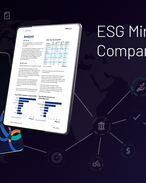Zinc is the 24th most abundant element in Earth's crust. If the zinc-air batteries develop as researchers expect they will not only become much cheaper to produce than lithium-ion batteries, they will also be more efficient as they can also store up to five times energy in safer and are more environmentally friendly.
While zinc-air batteries are used as an energy source in hearing aids and some film cameras and railway signal devices, their widespread use has been hindered by the fact that recharging them has proved difficult due to the lack of electrocatalysts that successfully reduce and generate oxygen during the discharging and charging of a battery.
Zinc-air batteries are batteries powered by zinc metal and oxygen from the air.
In a paper published in Advanced Materials tchemical engineers from the university, working with Singapore’s Nanyang Technological University, have outlined a three-stage method to overcome this problem.
According to lead author Professor Yuan Chen, from the University of Sydney's Faculty of Engineering and Information Technologies, the method can be used to create bifunctional oxygen electrocatalysts for building rechargeable zinc-air batteries from scratch.
"Up until now, rechargeable zinc-air batteries have been made with expensive precious metal catalysts, such as platinum and iridium oxide,” he said.
“In contrast, our method produces a family of new high-performance and low-cost catalysts.”
These catalysts are produced through the simultaneous control of the composition, size and crystallinity of metal oxides of common elements such as iron, cobalt and nickel.
They can then be applied to build rechargeable zinc-air batteries.
Paper co-author Dr Li Wei said trials of zinc-air batteries developed with the new catalysts had demonstrated excellent rechargeability – including less than a 10% battery efficacy drop over 60 discharging/charging cycles of 120 hours.
"We are solving fundamental technological challenges to realise more sustainable metal-air batteries for our society," Professor Chen said.
Lithium-ion batteries, such as those in Tesla cars, and similar to the world’s biggest battery that is set to be constructed in South Australia, are light and effective at delivering power quickly, but also contain pressurised, combustible materials, which can have severe effects after internal short circuiting.
Other battery alternatives include magnesium, which does not degrade as much as lithium during the charge-discharge cycle, and graphene, also used to enhance electrode structures.
While the technology is still in the laboratory phase, it could be the “killer app” for utility renewable energy and storage projects if it can be successfully scaled up to support grid applications.

























